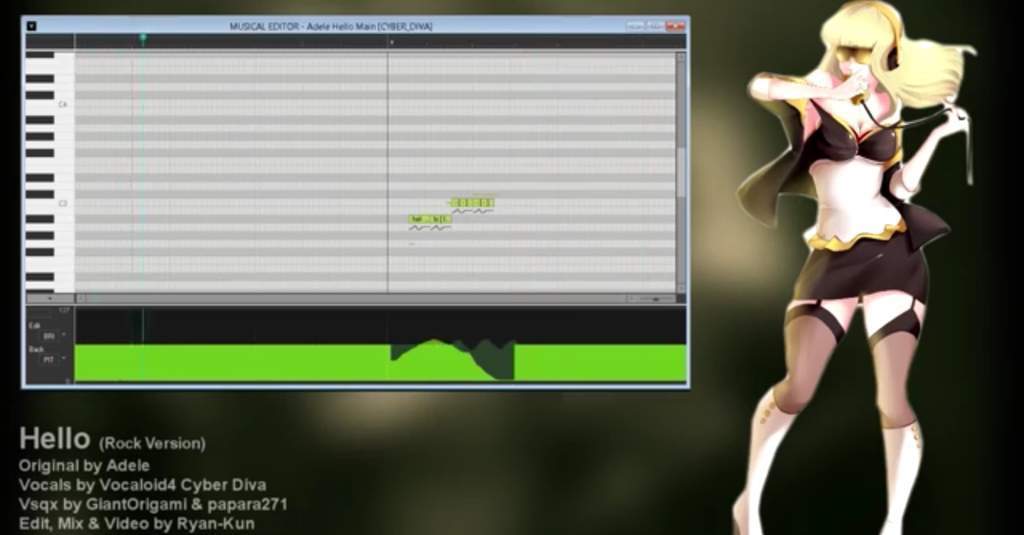
Given the gap between Hatsune Miku: Project Diva Future Tone, which launched in June 2016 in Japan January 2017 outside Japan, and the way the Nintendo Switch has found its way into people’s homes as of late, Hatsune Miku: Project Diva Mega Mix could be some’s entry into the series. For example, 2014’s Hatsune Miku: Project Diva F 2nd does offer English translations for the lyrics running along the bottom of the screen, which is very helpful for songs with actual stories like “Romeo and Cinderella” or “Love-Hate.” There are no translations here, which is a bit of a bummer, but hopefully some of the tracks with rather obvious stories conveyed, like “Acute,” will prompt players to explore more. While localizations of the actual songs are never a guaranteed inclusion, some releases have offered them. There’s just one feature missing that could really have helped people using Hatsune Miku: Project Diva Mega Mix as a means of learning about Vocaloids and their music: translations. It isn’t as detailed or intricate, but it does give people a chance to see an animated version of “Luka” as she puts all her efforts into preparing something for someone she adores. Valentine’s Day has arrived so, to finally share her feelings, she’s making chocolates as a way to confess. The Luka-led “Dreamin’ Chuchu” follows a young woman who is in love.

Of them, only one of them attempts to have a storyline. This doesn’t really happen with the new Hatsune Miku: Project Diva Mega Mix songs. One of the more haunting ones here is “The Disappearance of Hatsune Miku,” which follows her realization that she is a Vocaloid and program, one that is about to be uninstalled. There’s also “Tell Your World,” which offers an opposite sentiment that suggests Miku wants to share all songs and music with everyone… rather than chowing down on creators’ creativity. It suggests that Miku is constantly hungering for new music, devouring the tracks that people create, and the intense pace and imagery keeps up the pressure even if you aren’t aware of what is being said. “Sadistic.Music∞Factory” is a fantastic example. We also have the second Love & Hate song, “Love-Hate,” which follows Len after he’s broken up with Miku, realized he is in love with Rin, and Rin is trying to determine her own feelings and what she wants.Īs for tracks to flesh out specific character attributes, there are plenty of Hatsune Miku: Project Diva Mega Mix songs offering potential personality traits.
DOES CYBER DIVA COME WITH VOCALOID 4 ANDROID
“Hello, Planet” follows Miku as an Android attempting to save a plant from a post-apocalyptic and dying world and is fourth in a series of five Doomsday songs by Sasakure.UK.

DOES CYBER DIVA COME WITH VOCALOID 4 SOFTWARE
In “Odds&Ends,” the Miku program encourages someone learning to use the Vocaloid software to create something beautiful. Except here, Miku meets the prince, Kaito, to kill him and falls in love with him instead. “Cendrillon” is a take on the Cinderella story. It’s one of many telling a tale of one or many characters. Yet still, right away it shows how the Vocaloid software and these characters can be used to set a stage in such a short period of time and inspire something larger. It is a dark one with a story eventually based on it that highlights the obsessive nature of the affair and a tragedy that ensues. This is a love triangle song, where both Miku and Luka are in love with Kaito, but he loves Luka. Which is an appropriate, albeit dark, way to start. While Hatsune Miku: Project Diva Mega Mix isn’t filled with these sorts of songs and is more of a fond return upon the series’ tenth anniversary, its wide selection helps introduce people to its “stories.”įor example, when you first head to the Hatsune Miku: Project Diva Mega Mix songs, “Acute” is the first track that comes up by, well, virtue of things being in alphabetical order.

There can be whole story arcs, like the Story of Evil line that begins with Rin’s “Aku no Musume,” or “Black Rock Shooter,” the Hatsune Miku ryo song based on a Ryohei “Huke” Fuke illustration that led to anime adaptations, mangas, and a game. Since these are characters who don’t have defined roles or personalities, people will sometimes use the music to create personas and situations for all of them. An interesting thing can happen with Vocaloid songs.


 0 kommentar(er)
0 kommentar(er)
